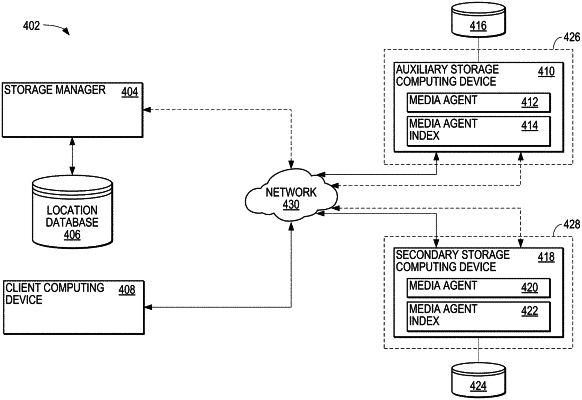| CPC H04L 67/1095 (2013.01) [G06F 18/214 (2023.01); G06N 7/01 (2023.01); G06N 20/00 (2019.01); H04L 67/1097 (2013.01); H04L 67/52 (2022.05)] | 22 Claims |

|
1. A method for managing an auxiliary data location and a secondary data location, the method comprising:
according to information management policy assigned to a client computing device, synchronizing secondary copy data stored at a first secondary data location to a first auxiliary data location to obtain auxiliary copy data from the secondary copy data,
wherein the secondary copy data is backed up from primary data stored at the client computing device,
wherein the information management policy is a collection of preferences or settings for performing data management operations on production data assigned to the information management policy and on secondary copies of the production data;
determining whether the client computing device has permanently moved from a first location to a second location, wherein:
the determining whether the client computing device has permanently moved from the first location to the second location comprises:
determining a probability value that the client computing device has permanently moved from the first location to the second location based on location information obtained from the client computing device,
comparing the determined probability value with a probability threshold value that indicates a likelihood that the client computing device has permanently moved,
wherein the first location is associated with the first secondary data location and the second location is associated with the first auxiliary data location;
in response to the determination that the client computing device has permanently moved from the first location to the second location:
designating the first auxiliary data location as a second secondary data location, and
designating the first secondary data location as a second auxiliary data location;
configuring the client computing device to back up the primary data to the second secondary data location; and
backing up the primary data stored at the client computing device to the second secondary data location to obtain updated secondary copy data.
|